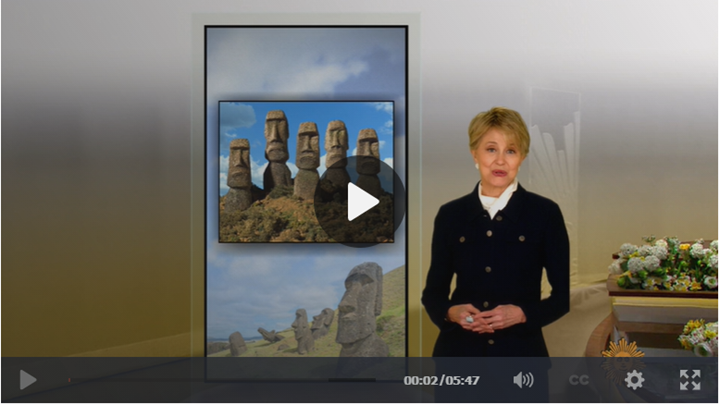Building Easter Island’s first music school
Concert pianist Mahani Teave has traveled the world, But Rapa Nui, sometimes known as Easter Island, is her home.
“Rapa Nui – that’s what we call ourselves here also,” she said. “That’s our people, the Rapa Nui people.”
It’s a triangle-shaped island about the size of Washington, D.C., way out in the South Pacific. And it’s best known for the 13-foot statues called Moai. Scholars think they were built to honor the island’s elders.
“Our ancestors were all voyagers,” Teave told correspondent Kelefa Sanneh, “and maybe that’s what’s in my blood, too, this coming and going.”
In the 1700s, Dutch explorers came to Rapa Nui. They landed on Easter, so they called it Easter Island.
In the late 19th century, slave raiders from Peru abducted about half the island’s population, and left behind smallpox, which killed many of the remaining islanders. Only 111 Rapa Nui survived.
 The Moai of Rapa Nui, also known as Easter Island. CBS NEWS
The Moai of Rapa Nui, also known as Easter Island. CBS NEWS
“We’re talking about a place that’s only been inhabited by humans for maybe 1,000 years?” Sanneh said.
“That is true, right, but a lot has happened,” said Miki Makihara, a linguistic anthropologist at Queens College in New York, who has been studying Rapa Nui culture for 30 years. “It’s a remarkable history of survival and reconstruction.”
Sanneh said, “Those 111 people kept the language alive, and transmitted it to the next generation – it’s a comeback story.”
“Yes!” Makihara laughed.
Nowadays, Rapa Nui is part of Chile, which is the closest mainland – 2,000 miles away. And Teave is a descendant of those 111.
Teave was born in Hawaii to an American mother. But her father is from Rapa Nui, and she spent most of her childhood there: “I feel, like, so strongly about the island, and here are my roots. This is where I learned all my first everything.”
She still remembers the day she heard that someone had brought something new onto the island: a piano. “‘We gotta go see that piano! Let’s go see!’ So, we get to the lady’s house. And she opens the door. ‘Please, can I go touch your piano?’ And I don’t think she even got a chance to answer. And then after that, I was like, ‘Please, please, I want piano lessons.'”
There were no piano teachers on the island, so Teave asked the woman who owned the piano to give her lessons.
“She got a piece of paper out, she drew some lines: ‘These are the notes. Go home and learn them,'” Teave laughed. “I memorized what each little thing on each little line and space meant. And after a few days, she said, ‘You know what? You can start coming to practice at my house.'”
In 1992, Teave’s family moved to Chile, where she could study at a conservatory. She was nine.
 Mahani Teave became enamored with the first piano on the island of Rapa Nui. She would go on to a career as an internationally recognized concert pianist. CBS NEWS
Mahani Teave became enamored with the first piano on the island of Rapa Nui. She would go on to a career as an internationally recognized concert pianist. CBS NEWS
Read more here: https://www.cbsnews.com/news/rapa-nui-first-music-school-on-easter-island
Story produced by Mary Raffalli. Editor: Joseph Frandino.



